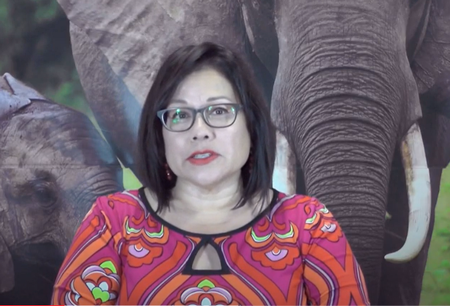Anthony Wallace
WSWS.ORG
Nearly 300 workers at Collins Aerospace wheel and brake division in Troy, Ohio, were locked out on Monday, February 21, after their rejection the previous Friday of the company’s “last, best and final offer” by a margin of 230 to 37. The facility supplies wheels and brakes for a number of commercial and military planes, including the F-16 Fighting Falcon, U-2 Dragon Lady and LM-100J. Collins Aerospace is a subsidiary of Waltham, Massachusetts-based Raytheon Technologies, a giant aerospace, defense and intelligence conglomerate.
The issues leading to their rejection of the contract, one locked-out worker told the World Socialist Web Site, center on “wages, pensions and health care, just like always.” Despite incredible profits after the rebound in aeronautics and the airline industry, the company “wants to nickel and dime us,” he said. Raytheon’s profits increased by 46.42 percent to approximately $12.5 billion in 2021.
The lockout of the aerospace workers comes in the midst of an intense geopolitical crisis and feverish war propaganda in the media over Russia’s invasion of Ukraine, which the US and its NATO allies are attempting to use as a pretext for a direct military confrontation with the nuclear-armed power.
The lockout’s potential disruption to the arms industry and the US war drive has already prompted anxiety within ruling circles. Ohio Democratic Congressman Tim Ryan, vice chair of the House’s Defense Appropriations Subcommittee, released an open letter to Collins’ and Raytheon’s CEOs on February 24 calling on them to end the lockout, stating, “As a member of the House Appropriations Committee’s Defense Subcommittee, I know well the critical role that Raytheon and its subsidiary, Collins Aerospace, hold as part of the United States’ defense industrial base. In these uncertain times, it is more important than ever to have stable workforces at our major defense contractors [emphasis added].”
Ryan was one of a number of US congressmen who participated in a Zoom call with Ukrainian President Volodymyr Zelensky in recent days. Following the meeting, he said, “They need planes, and, quite frankly, I think we need to find a way to get them there.” The arming of Ukraine by the US and NATO and the increasingly bellicose calls in the media and Congress for a no-fly zone over the country threaten to provoke a direct and catastrophic military conflict with Russia.
As the WSWS has explained, the ruling class in the United States, confronting a staggering economic, social and political domestic crisis, is seeking to create a false “national unity” through the means of militarism abroad and by channeling tensions against an “external enemy,” in this case, Russia. Thus, the White House and the political establishment, working with the pro-corporate trade unions, are increasingly using the war drive as a pretext to block strikes and settle disputes over wages on the companies’ terms.
The United Auto Workers union (UAW), for its part, is working to keep the workers isolated. The initial refusal of the UAW to call a strike at Collins, despite workers’ overwhelming rejection of the contract, has allowed Collins to take the initiative, locking out the workers on the company’s schedule.
Now the UAW officials are telling their members that they are prohibited from organizing mass picketing or taking any actions to stop scabs from entering the plant, claiming it would jeopardize workers’ chances of collecting unemployment benefits.
In a statement, Collins Aerospace wrote that they “are prepared to continue negotiating in good faith with UAW Local 128 and seek to reach an agreement that recognizes and rewards our employees’ contributions while allowing us to remain competitive.” Such statements are routinely made by companies as they seek to cut workers living standards and impose multi-tier wages and benefits.
Raytheon CEO Greg Hayes, meanwhile, received compensation of $21 million in 2020. The likelihood is that both Raytheon’s profits and Hayes’ compensation will balloon as the aerospace and military industries benefit from the frenzied buildup to war against Russia being pursued by the US and its NATO allies.
Another worker told the WSWS that although Collins claims to be increasing worker compensation, they are really just moving money “from one pot to another.” After workers closely studied the hefty and complicated contract, it became apparent that there was no real monetary gain.
The contract attempts to pit worker against worker, shortchanging the newer hires despite being nearly acceptable to veterans. “If it had been just me, I would have approved it, but I couldn’t leave the other guys hanging,” says one picketing worker with more than 30 years on the job.
Another worker said that Collins called their only proposed contract to date their “last, best offer,” but “it’s more like their first and last.”
Despite the lockout of its entire brake and wheel workforce, Collins says the plant is running as usual. However, in the place of highly trained and experienced workers, Collins is forcing many of its office workers, salaried and otherwise, to make up production, posing significant safety issues for both workers and commercial aircraft. One shipment of parts, in fact, has already “returned because it was not properly inspected,” one locked-out worker said.
The 300 Collins workers face a multi-front battle. Collins Aerospace is applying significant pressure, and the UAW is working to keep workers in the dark on the “negotiations,” while looking for the earliest opportunity to force a deal through, which will inevitably be little-changed from that which workers already rejected.
In July 2021, nearly 3,000 striking Volvo Truck workers were forced by the UAW to revote on a concessions agreement they had already voted down. The UAW declared the ratification of the contract by a margin of just 17 ballots after a highly suspect voting process. In October and November, the UAW then pulled a similar maneuver on 10,000 striking John Deere workers, combining it with widespread voter intimidation.
In the present situation, the UAW is keeping the Collins workers isolated from countless other aerospace workers who are also seeking to increase their living standards.
In Davenport, Iowa, over 360 workers at Eaton-Cobham Missions Industries, a defense contractor and supplier of military airplane fueling systems, are in the third week of their strike. Workers at the plant have courageously rejected two contract proposals between the company and the International Association of Machinists, and Eaton is now threatening to hire permanent replacements.
Each of these fights are not merely disputes over contracts, but rather political struggles. More than two years into the COVID-19 pandemic, capitalism presents workers with a disaster: surging inflation, rapidly eroding purchasing power, grindingly long hours and workplaces which remain unsafe. Now, the corporations, the banks and their political representatives in the Democratic and Republican Parties are demanding that workers make further sacrifices for their war drive. All the while, the corporate owners and financial aristocracy continue to grow unimaginably richer.
To break free of the isolation imposed by the UAW and expand their struggle, the WSWS urges workers at Collins to form rank-and-file strike committees, democratically controlled by workers themselves. Such committees would draw up lists of demands based on what workers actually need, and would link up with other workers—including Eaton workers in Davenport, educators in Chicago and Minneapolis-St. Paul, oil refinery workers and beyond—in a common fight for the interests of the working class.












